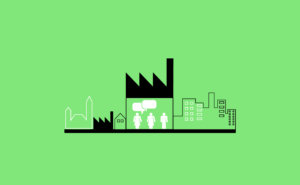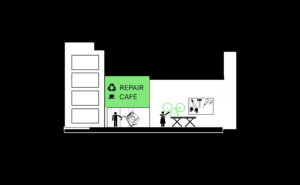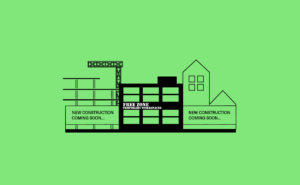
C.2 Negotiated Qualities & Environmental Criteria
The environmental impact of manufacturing can impact areas far beyond the production site, requiring informed decisions by affected stakeholders to be made to avoid conflict and unintended consequences.
[Context] Manufacturing often has some level of environmental impact. This can include the extraction of resources (mining, forestry or agriculture), the processing of resources, emissions from logistics, the production process itself (noise, air and water) or from waste generated (directly from the manufacturer or the consumption process). Business owners and their suppliers may be directly responsible for environmental issues but they are not necessarily directly affected by the environmental consequences or communicate them to consumers. Some environmental issues must simply be avoided, such as discharging pollutants into waterways or burning toxic waste. Other issues are ‘tolerable’ (such as noise or logistics). But in order to avoid conflicts it is important that appropriate discussions can occur to determine the trade-offs between the benefit manufacturing and the cost on the environment. The fundamental question is what environmental issues can be tolerated and which cannot?
[Problems] There are a vast range of possible environmental issues that make it very challenging to understand the environmental impact of manufacturing or manufactured goods. Firstly, issues depend on establishing and policing environmental standards. Citizens confer much of their responsibility to public authorities due to the complexity of interpreting environmental risks and impacts. Secondly as a result of noise, smells and even water vapour, manufacturers may be perceived as polluting while in practice have little environmental impact. Such perceptions can create unnecessary friction between manufacturers and neighbours which can make making unbearable. Thirdly, due to the complexity of production chains, consumers are often unaware of their larger environmental impact and therefore do not see how environmental issues occur in third countries. Finally, as many industrial areas are located in flatter sites or former wetlands, they’re increasingly exposed to flooding and rising water levels. Protection measures and compensation for abandoning sites may require public debate. Neighbours and consumers need access to information on the (global) environmental impact of manufacturing on their lives so that well informed discussions can occur.
[Forces] Decision making requires an extensive amount of data and knowledge which can result in large amounts of complexity and difficulties in defining priorities. One of the biggest challenges involves defining whose interests to put forward, what to protect and where to seek compromise. Is it about R.4 Availability of Diverse Jobs or about pushing for high air quality standards? Is it about sharing the impact of noise and odours or C.9 Concentrating Messy Making Along Infrastructure? Is it about the impact of material extraction? Secondly, the question of the negotiation process is challenging. How are the actors and interest groups involved? Do they have decision making power? How are minor and serious concerns addressed when some issues such as noise and odours can be subjective? This depends on the capacities of a negotiator or facilitator (R.3 Curator) to support the process and reach workable solutions.
[Solutions] Ensure a platform is available for debate and collaborative decision making while providing conditions for constructive discussions that minimise long-term conflict. Develop trust by providing stakeholders and interest groups with suitable information that clearly and honestly explains the situation at hand (refer to R.2 Transparent Making and R.1 Making Making Visible). Ensure discussions contain broader issues of material extraction and foreign production processes (R.6 Sustainable Product Cycles) to avoid discussions focusing on NIMBYism or financial value. A respected intermediate actor, such as a local R.3 Curator, could help both communicating the environmental impact to actors and interest groups while hearing their concerns, and helping find workable solutions. At the planning stage, particularly with C.1 Microzoning projects, explore solutions to reduce nuisances through C.9 Concentrating Messy Making Along Infrastructure, ensuring N.9 Making Touches Making or concentrating B.1 Making Around Courtyards. Where decisions are made to increase environmental standards, the most vulnerable businesses should be fairly compensated by R.10 Place-based Financial Levers. Some businesses find simple dialogue and open door events (R.1 Making Making Visible) are enough to help local residents better appreciate the production process and reduce preconceptions about what manufacturing activities entail. Participatory processes and matchmaking between businesses can offer constructive outcomes for N.2 Re-use of Material & Energy Flows through N.5 Local Collection Points of Segregated Waste. This can lead to R.6 Sustainable Product Cycles.
[Contribution] Add contributions here.







